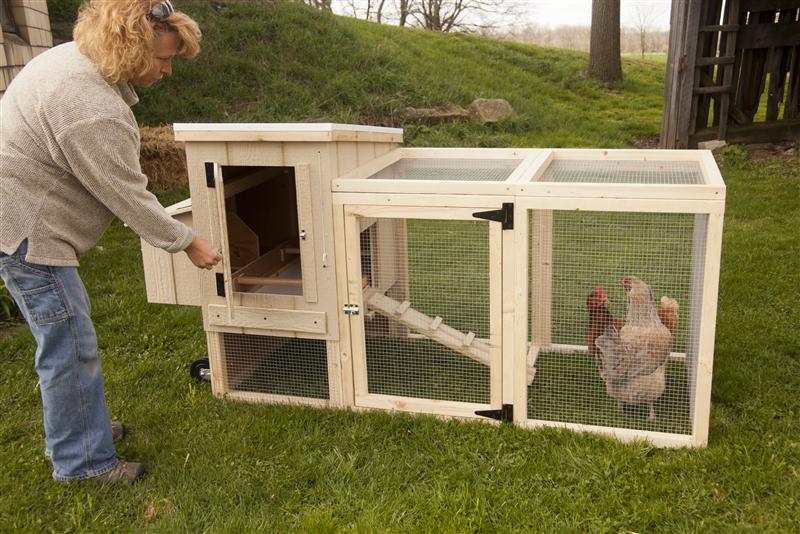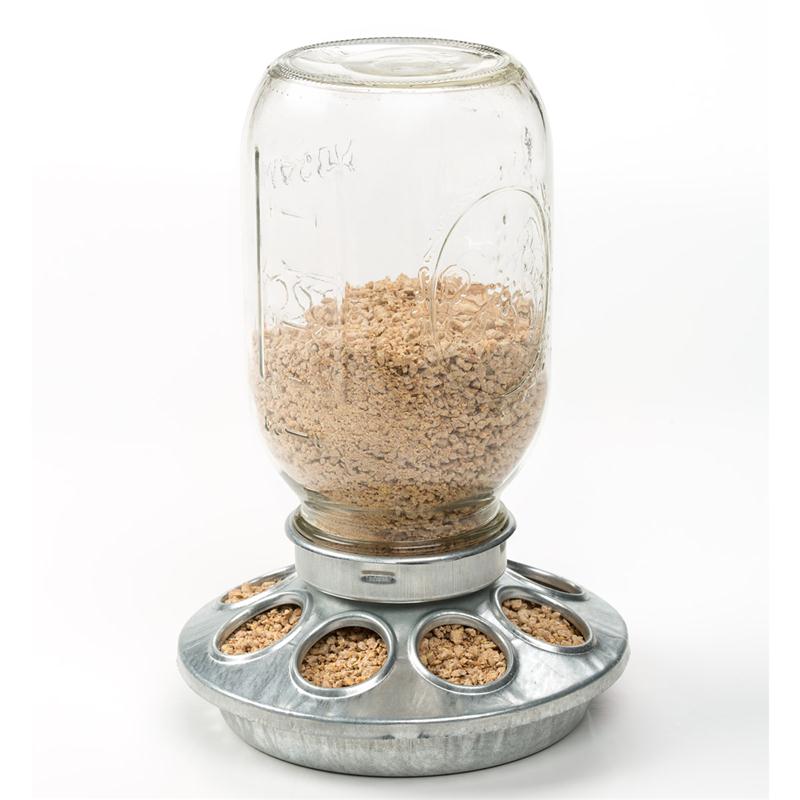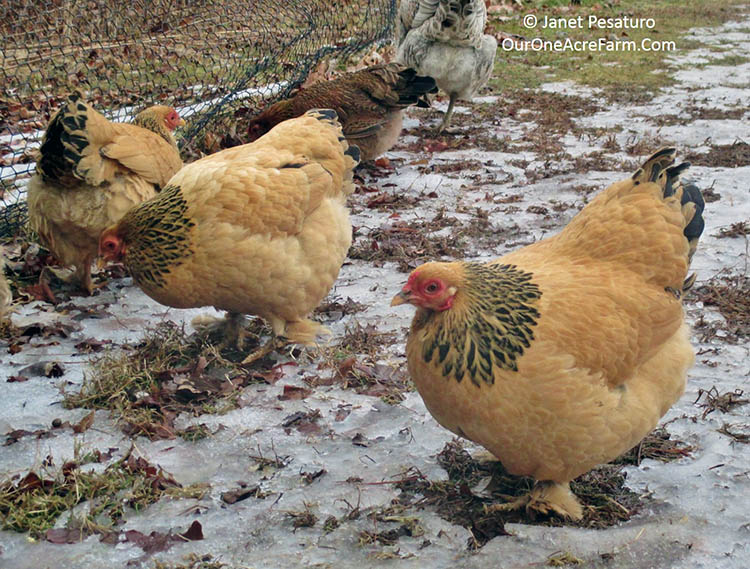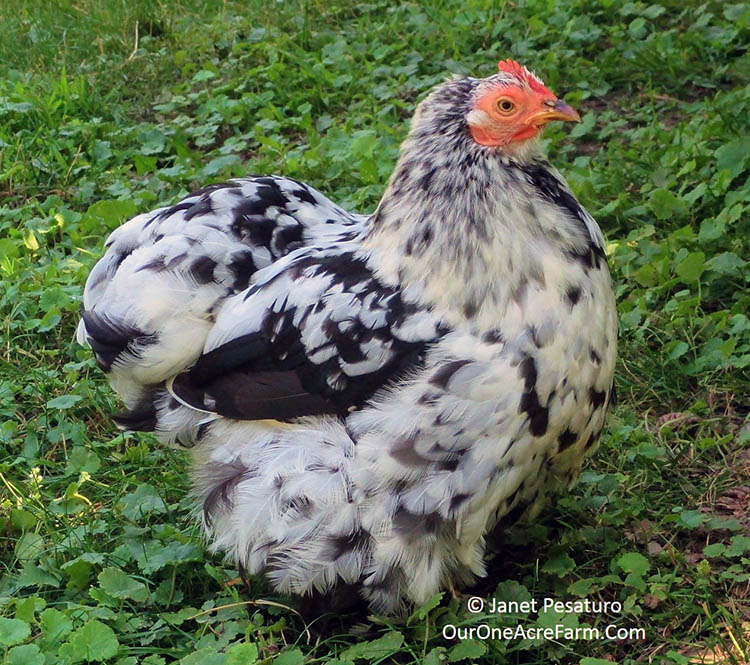
Editor’s Note: Welcome to new blogger for Lehman’s Country Life, Janet Pesaturo. Janet is the writer and photographer at OurOneAcreFarm.com, where she blogs about backyard farming, sustainable living, and nature.
Birds are beginning to sing, the daffodils are poking up, and it’s time to think about baby animals. Spring is a wonderful time to plan for a new flock of chickens, and if that’s what you’re planning, you have many choices ahead of you. One important decision is which breed(s) to raise. The wide variety makes selection a rather daunting task, but also ensures that you’ll find at least one to fit your needs and desires. Chicken breeds differ in many ways, from productivity to appearance to temperament, and more. Exploring the options will help you choose.
Utility
Before the days of factory farming, when many families kept chickens to put food on the table, breeds which produced meaty bodies and lots of eggs were highly desirable in America. These breeds are called “dual purpose”. The hens lay well and the roosters flesh out well for the table. Some of the hens also go broody (set on eggs to hatch them), ensuring future generations. Dual purpose breeds tend to be calm, healthy birds, and forage well. Rhode Island Reds and Barred Plymouth Rocks are two well-known examples.

Other breeds were developed specifically to produce either eggs or meat. Slender breeds like Leghorns and Hamburgs are too thin for the table, but lay more eggs than dual purpose breeds. Chunky breeds like Cornish and Brahma were bred to grow large breasts and meaty thighs. They don’t lay many eggs, but they flesh out better than dual purpose breeds. The modern hybrid Cornish-Rock cross trumps all of the old fashion meat breeds, but you may prefer the latter if you are interested in breed conservation.
Size

Chickens come in 2 general size classes: standard (also called full-size, or large) and bantam (miniature). There is a bantam version of many standard breeds (e.g., bantam Wyandotte, bantam Brahma), but some bantams have no large counterpart. The Dutch bantam, for example, exists only as a bantam. Bantams are about a quarter of the size of standard breeds, and lay eggs about half the size of those of standard breeds. That’s a better ratio of egg size to body size, but because they are bred more for appearance than for production, bantams tend to lay far fewer eggs and grow more slowly than standard birds. But bantams have their uses. If you want to compete in poultry shows, if your chickens will be pets, if young children will be involved in their care, or if space is very limited, bantams may be a fine choice.
Plumage

There are so many beautiful plumage colors and patterns to choose from, but visual appeal isn’t the only consideration. If your birds will be free ranging, think about camouflage. A color that blends in with the surrounds offers some protection from the searching eyes of predators. Striped, mottled, speckled, etc., tend to blend better than solid colors. Muted tones are better than white or yellow. Solid white birds are probably the most easily seen by predators (except on snow). However, if birds will always be confined and you are raising them for meat, white plumage is desirable because it leaves no dark spots when plucked.
Plumage also varies in other ways. Silkies have modified feathers that look like fur, and both Silkies and Polish chickens have fancy head feathering which can obscure vision. Unless they are confined, these birds are quite vulnerable to aerial predators. You can clip the head feathers to improve vision, but do you want that extra maintenance?

Eggshell Color
Chicken eggs come in many shades of brown, white, blue, and olive, depending on breed. In general, dual purpose and meat breeds lay brown eggs, and slender, light weight layers produce white eggs. Blue and green eggs come from Easter eggers and Olive eggers, respectively. Shell color does not influence flavor or nutritional value.
Heat and cold tolerance

Different breeds fare better in different climates. In general, slender breeds with single blade combs are better suited to warm climates, because they lose heat more quickly. These include breeds such as Andalusians and Campines. Plump breeds with small, thick combs, such as Brahmas, Chanteclers, and Buckeyes are better suited to cold climates, because they retain heat better. Be aware that while plump breeds with single blade combs, such as Plymouth Rocks and Orpingtons, are generally cold tolerant, their combs are susceptible to frostbite, which may be painful for the bird.
Temperament and Behavior

Each breed is associated with a certain temperament and behavioral tendencies. Slender layers are inclined to be nervous and flighty, while heavier breeds are usually calm and uninterested in flying. Breeds originally developed for cock fighting are more aggressive. Some breeds, such as Cochins and Silkies, are apt to go broody. Most layers and dual purpose breeds enjoy foraging, while Cornish-Rock crosses are more sedentary.
Variation within a Breed
While there are distinct differences among the breeds, there’s a lot of variation within a breed. Most Hamburgs don’t go broody, but an occasional one might. Most Orpingtons are calm, but a few may be nervous. Don’t be surprised if your leghorn isn’t a superstar layer, or if your Easter Egger lays brown eggs. The best you can do is choose the breeds you expect to be happy with, and if you’re willing to except the vagaries of Nature every now and then, you’ll have fun with your flock.
See more of Janet’s farm and chickens at OurOneAcreFarm.com.
































